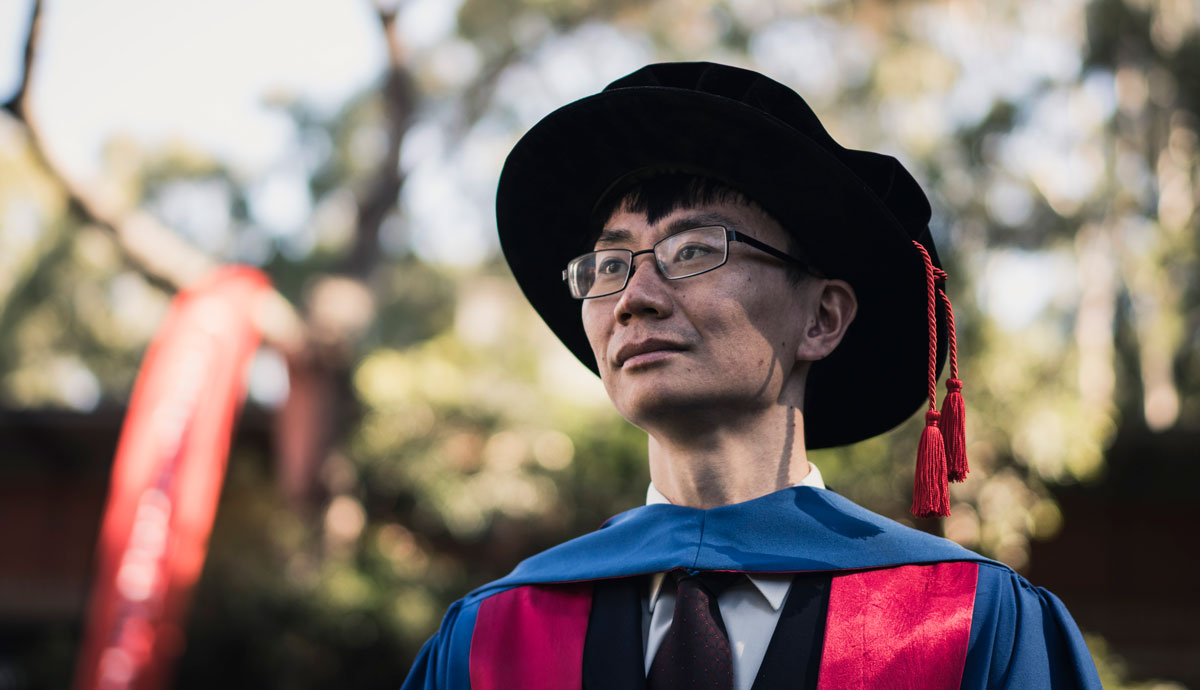July 20, 2017
Vehicle simulation work sets path for advanced electric vehicles
PhD graduate Boyuan Li is working on advanced methods of improving vehicle handling, safety and performance.
The advent of electric vehicles is offering not only a sustainable solution to transport, but potentially a complete rethink of how cars are designed and built.
An emerging technology in cars is in-wheel engines, or integrated systems that combine power, braking, suspension and steering in a single unit.
For the past four years, UOW PhD graduate Boyuna Li has been investigating how to get the best out electric vehicles, using advanced four-wheel independent steering and four-wheel drive technology.
“In most vehicles, front-wheel steering has been used to steer and this has worked quite well for a long time,” Boyuan said.
“When the rear wheels are also used for steering, tyre force generation can be reduced and better responsiveness can be achieved.
“Recently, with the emergence of in-wheel motor technology for electric vehicles, the innovative four-wheel independent steering has been developed and the steering angles of each of the four wheels can be different.
“This steering characteristic can greatly improve the vehicle mobility and stability.”
Four-wheel independent power and steering has been enabled by electric motors, which allows for a decentralised powertrain, with the functions of power, braking, steering and suspension integrated into each wheel.
Boyuan’s thesis has focused on developing control algorithms that can calculate the vehicle dynamics, adjusting steering angle, power output or braking force, according to the driving conditions.
The pay-off would be improve safety, control and more efficient energy use.
“I have developed the mathematical models and used software to simulate performance in a flat-road environment,” Boyuan said.
“The advantage gained from integrating suspension, brakes, motor in the wheel is that there are no mechanical linkages that create friction and reduction of power.
“In-wheel motors are still in the experimental stage and there are challenges to overcome in practical settings, such as reducing road vibrations that can damage the motors
“But the concept of in-wheel motors could change the structure of what we know a vehicle to be.”
The next stage that Boyuan is working on is to include 3D information in the control model about the path the vehicle is travelling, which would be of use to four-wheel drive vehicles where that added complexity of bank angle and road gradient has to be factored in.
“We are seeking to design a travel trajectory planner to plot a course with the least bank angle for best stability performance,” he said.
Given the nature of the work applies to vehicle control, it could find use in autonomous electric vehicles to improve reliability and performance.
Boyuan was among 50 PhD students from the Faculty of Business and the Faculty of Engineering and Information Sciences to celebrate their graduation this week (20 and 21 July).
He studied a Masters degree at UOW and, after finding a field he was interested in, carried on with a PhD under Professor Haiping Du.
“Turning equations into simulations was very challenging but seeing the results that verified my modelling was very rewarding,” Boyuan said.
“Electric vehicle technology is a really interesting area for me and I think this modelling is an important contribution to future developments in this area.”
Professor Du said Boyuan had accomplished great achievements in his research on vehicle dynamics, especially for the control of electric vehicles with in-wheel motors.
"The control of electric vehicle with in-wheel is a promising research topic, which is used to greatly improve electric vehicle dynamics performance, safety, reliability, and energy efficiency, in the current literature and has attracted a lot of attention in universities from USA, China and European countries.
"Boyuan has proposed several different control strategies to successfully achieve various dynamics control targets for this kind of electric vehicle.
"A number of Boyuan's paper publications proved his major contributions contribution in this area."
